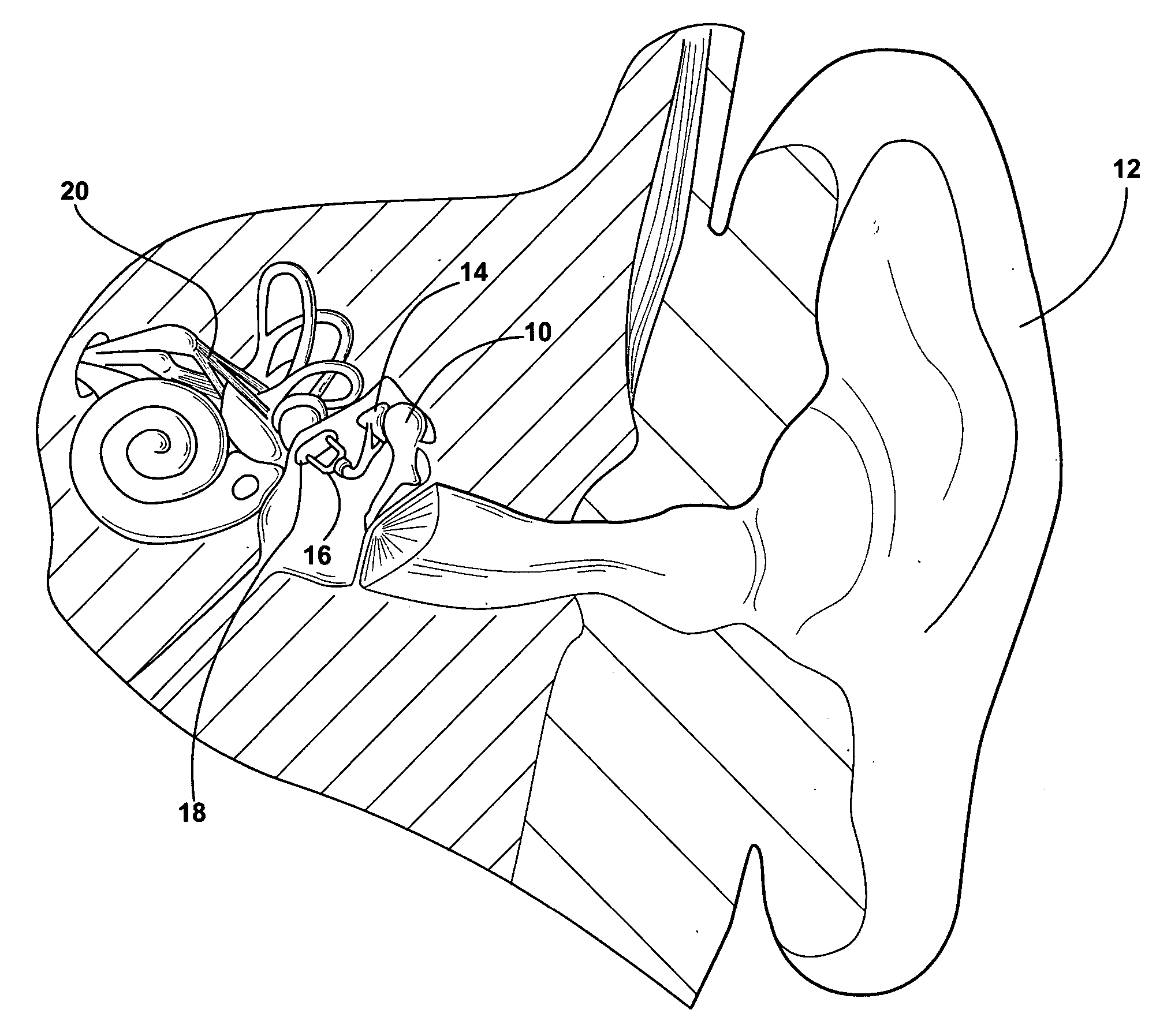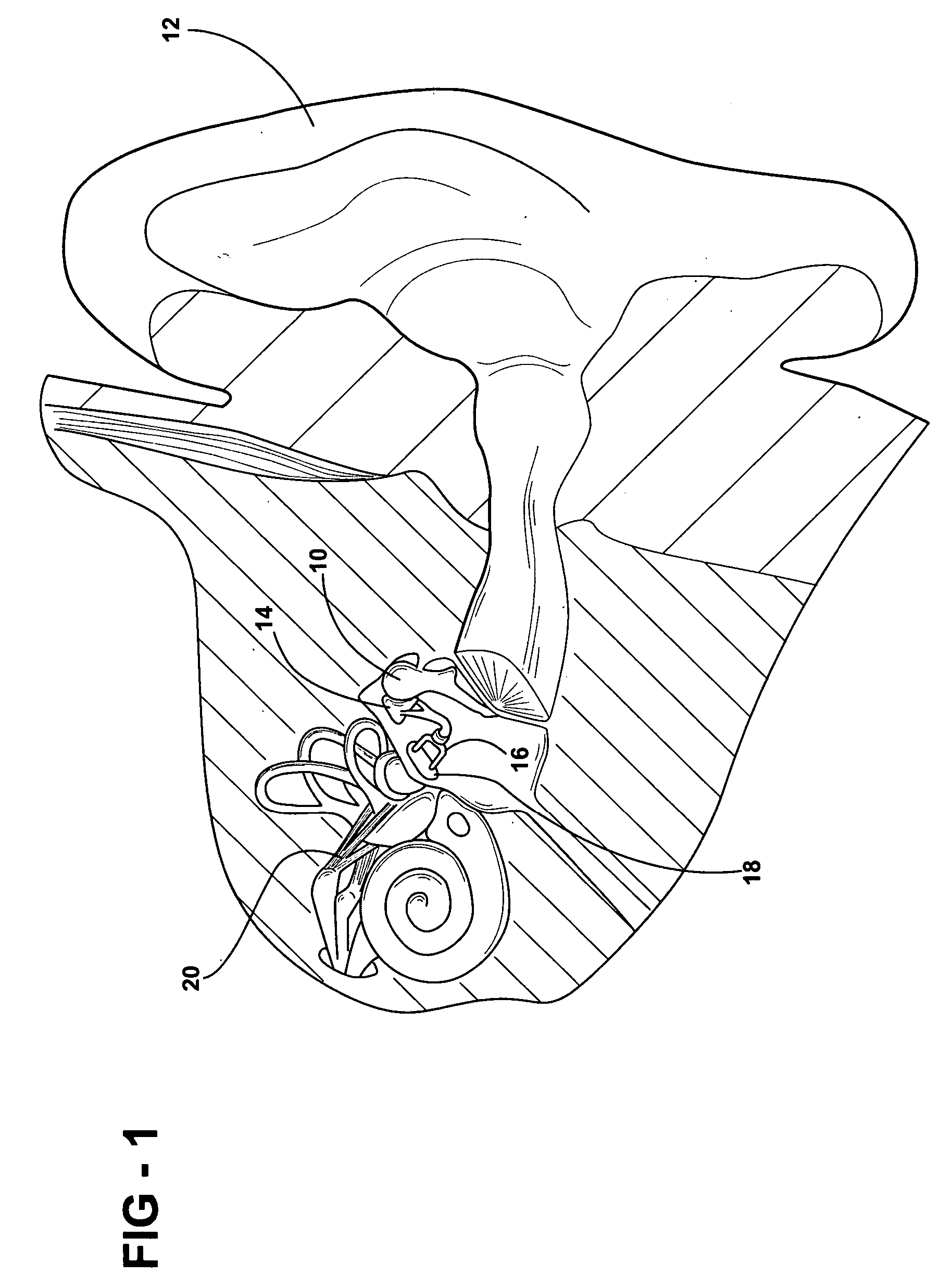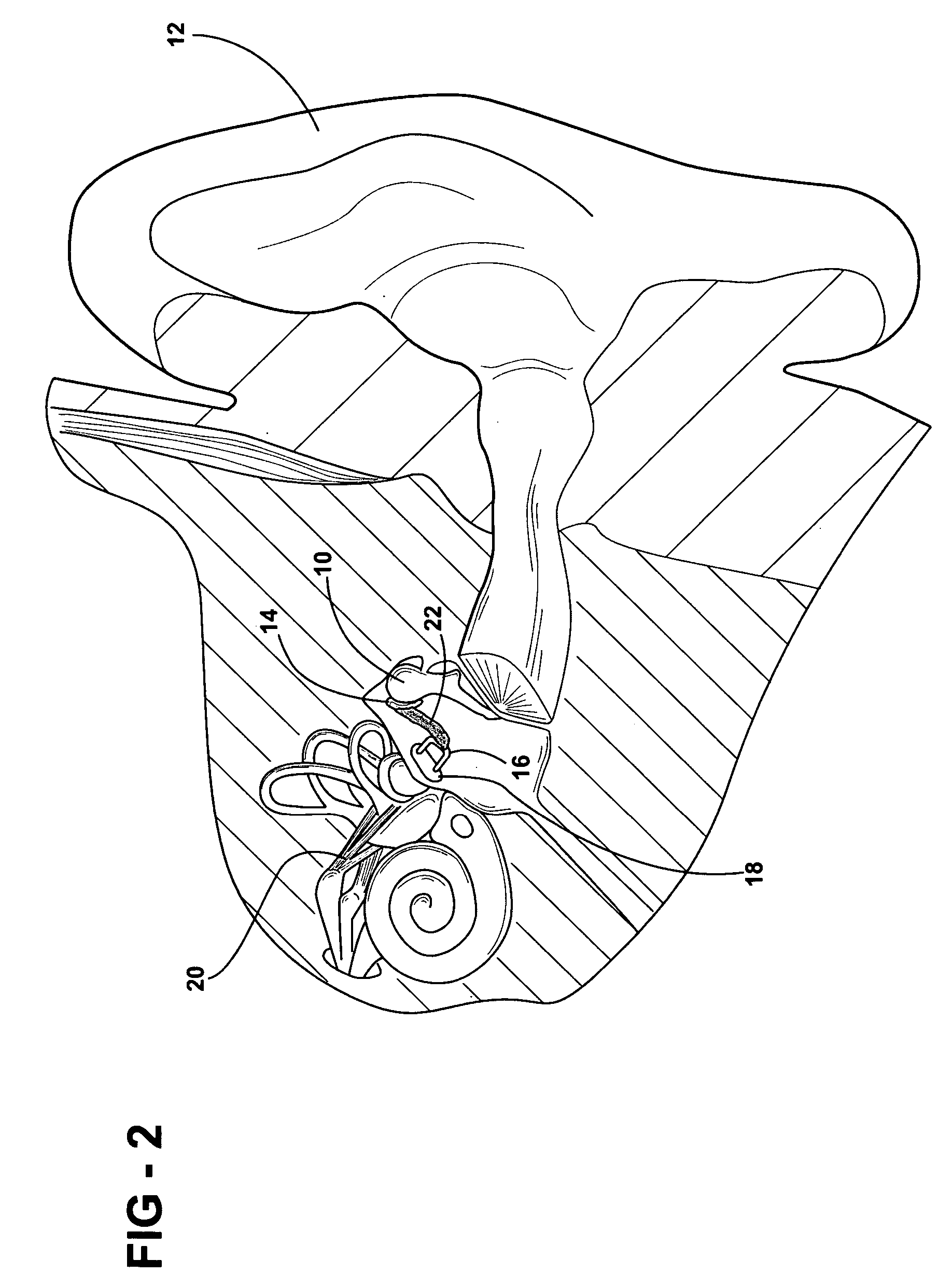Middle ear reconstruction process and apparatus for performing the process
- Summary
- Abstract
- Description
- Claims
- Application Information
AI Technical Summary
Benefits of technology
Problems solved by technology
Method used
Image
Examples
Embodiment Construction
[0016] The fusing links formed by the method and apparatus of the present invention may be broadly classified as bone paste. Preferably, these bone cements employ calcium phosphate based materials. Hydroxyapatite (HA) is a type of calcium phosphate material that is a major inorganic constituent of bones. Corals create a calcium carbonate exoskeleton resembling human bone with an average pore size of 200 microns. This exoskeleton is then converted into HA through an exchange reaction of the carbonate for phosphate. The resultant material has the porous anatomy of bone with identical chemical composition. HA is capable of strongly bonding to adjacent bone and stimulating bone in-growth resulting in osseointegration. It does not elicit a foreign body or immunological response.
[0017] Another type of bone cement, Oto-Cem or CrenoCem, is an ionomeric bone cement. Clinical reports show promising results using Oto-Cem in closure of the air-bone gap in patients with incus necrosis. They als...
PUM
 Login to View More
Login to View More Abstract
Description
Claims
Application Information
 Login to View More
Login to View More - R&D
- Intellectual Property
- Life Sciences
- Materials
- Tech Scout
- Unparalleled Data Quality
- Higher Quality Content
- 60% Fewer Hallucinations
Browse by: Latest US Patents, China's latest patents, Technical Efficacy Thesaurus, Application Domain, Technology Topic, Popular Technical Reports.
© 2025 PatSnap. All rights reserved.Legal|Privacy policy|Modern Slavery Act Transparency Statement|Sitemap|About US| Contact US: help@patsnap.com



